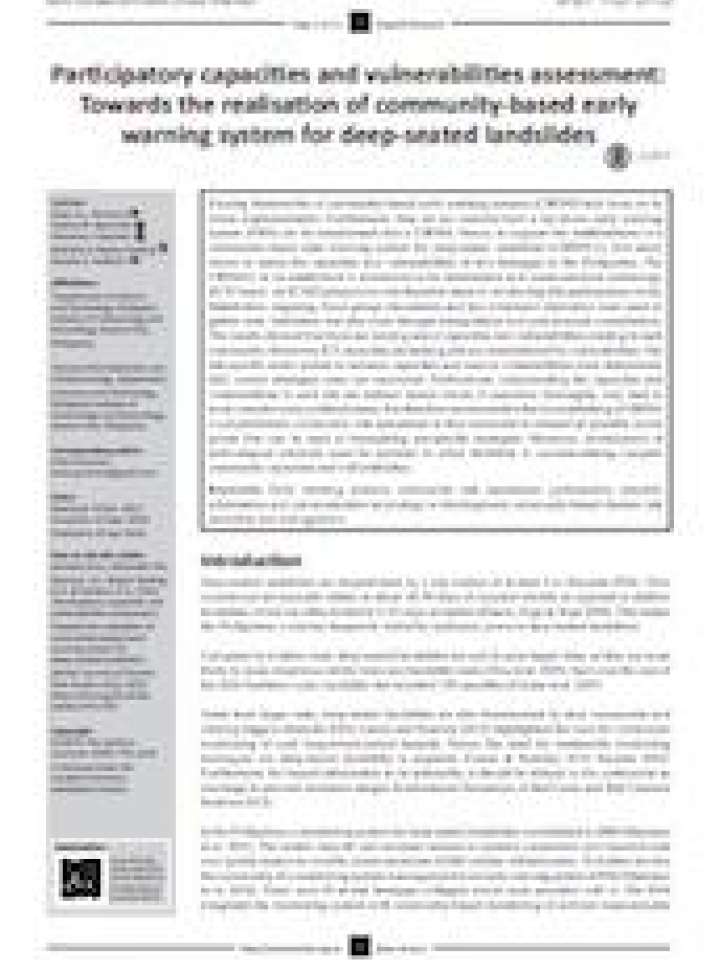Participatory capacities and vulnerabilities assessment: Towards the realisation of community-based early warning system for deep-seated landslides
Existing frameworks lack focus on the actual implementation of community-based early warning systems (CBEWS), and they do not describe how experts can transform a top-down early warning system into a CBEWS. Hence, to support the establishment of a CBEWS for deep-seated landslides, this study aimed to assess the capacities and vulnerabilities of five barangays in the Philippines.
The CBEWS-L to be established was envisioned to be information and communication technology (ICT)-based. An ICT4D perspective was therefore taken in conducting this participatory study. Stakeholder mapping, focus group discussions and key informant interviews were used to gather data. Validation was also done through triangulation and post-analysis consultations.
The results show that there are varying sets of capacities and vulnerabilities existing in each community. Moreover, ICT capacities are lacking and are outnumbered by vulnerabilities. In turn, the authors determined site-specific action points to enhance capacities and resolve vulnerabilities. Furthermore, compounding the capacities and vulnerabilities in each site are indirect factors which, if examined thoroughly, may lead to more complex socio-political issues. It is therefore recommended that in establishing a CBEWS, researchers first conduct a comprehensive community risk assessment to exhaust all possible action points that experts can use in formulating site-specific strategies. Moreover, development of technological solutions must be modular to allow flexibility in accommodating complex community capacities and vulnerabilities.
Explore further
